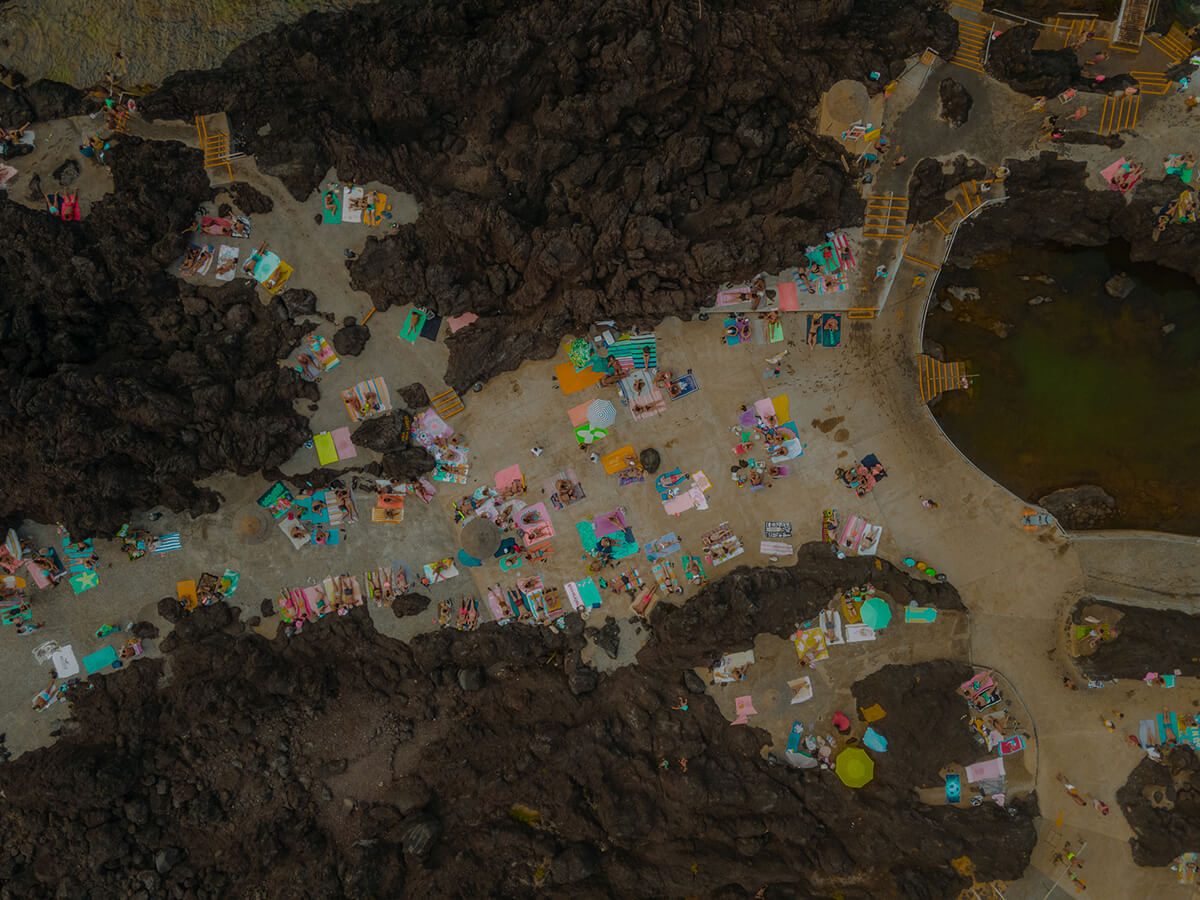INSPIRATION
My Favorite Shot
PLANET EARTH
What’s the favorite photo you’ve taken?
Could you pick a favorite image you’ve taken? Not easy we know, but to coincide with our July 2023 PLANET EARTH call for entries, we asked some of the photographers in our community to do just that. Or at least to pick a shot related to the topic that they hold dearly, were happy to have taken recently, has a great story behind it, or that resonates with them in some other way right now. Here they tell us why…
(Banner image: Alizé Jireh)
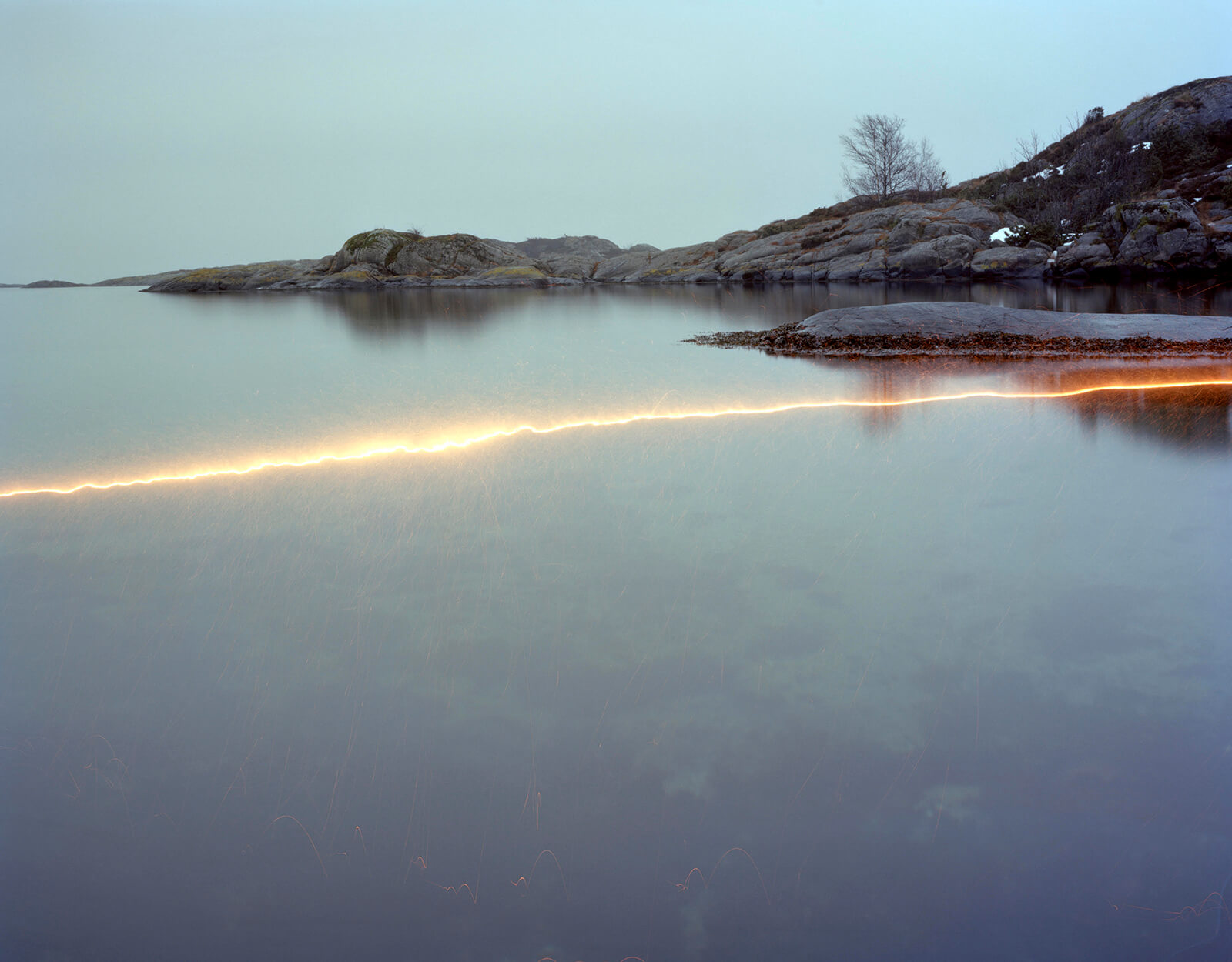
OLE BRODERSEN
“This is an image from my Trespassing series, where manmade objects are placed into untouched nature. I capture their unhindered movement through the landscape, on a 4×5 large format camera.
The project came about when I was photographing a huge block of styrofoam, that got blown over by the wind, during the long exposure. This got me interested in exploring objectivity in photography. In the early days of photography, it was a very hot topic, as photography could not possibly be an art form because it was completely mechanical and thus completely objective. In my work I believe that I achieve a more honest representation of the forces that surround us by giving up some control of the process.
Photography is widely used in science, to illuminate, discover or research phenomena that we cannot see with the naked eye. There is something called false color images, which is often the ones we see from outer space. The ‘wow‘ pictures of star fogs for example, they don’t look like that in real life. The color wavelengths are adjusted so that our eyes can see them. False color, as opposed to true color. I have thought of this as a good analogy to my pictures, that I illuminate, or in a way I color, things that you cannot see or notice.
This image is the result of some early trials using a sparkler as a light source. Up until this I had only done dusk and nighttime images, with balloons filled with LED-lights. The bright light of the sparkler, let me work at daytime, giving me some more opportunities. I have always been inspired by the chronophotographs of Marey and Muybridge, and I am obviously not making any scientific breakthroughs here, but sometimes I have my own little epiphanies. Like here, where I figured out that the sparks bounce off the surface. Marey was working a lot with visualizing turbulence in air and water, and in this image I feel I have gotten close to visualizing the waves. I like to call it a wave analysis.”
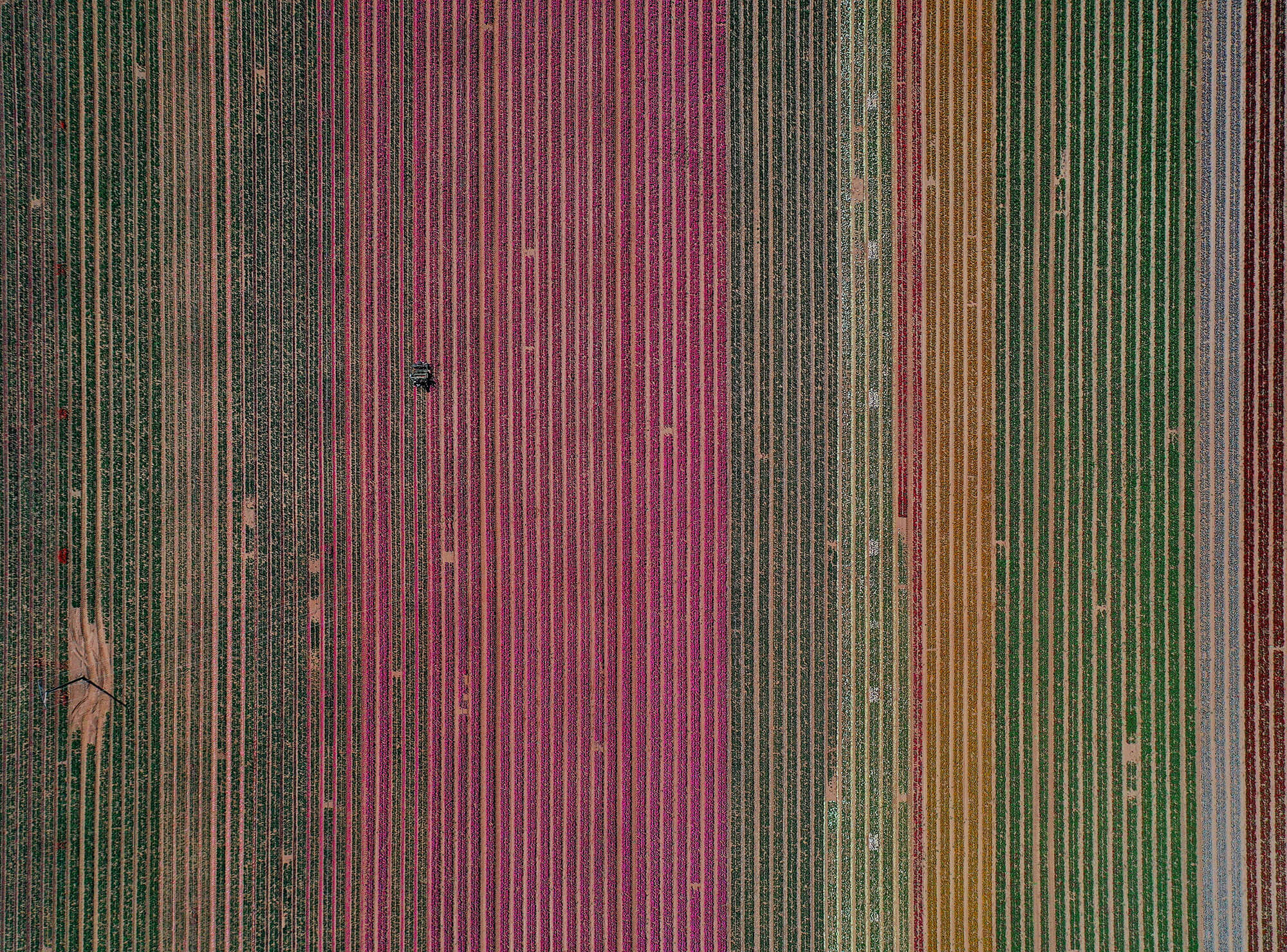
MAGALI CHESNEL
“The cut of tulips in Provence. It was by reading an article in the French newspaper Le Figaro that I discovered, in its Travel section, where to admire the most beautiful spring flowers in France. I discovered that Provence, in France, is one of the last Dutch tulip nurseries.
Surprised by this information, thinking that the Netherlands is the “headquarters” of the tulip, I decided that during a weekend in April I would head to the south of France, more exactly to the Alpes de Haute-Provence, to discover this little-known activity and to understand a little bit more about it.
The Dutch tulip farmers outsource the bulb production to these growers in Provence, serving as nurseries. Once the tulips bloom, the cultivators cut the heads of the flower either manually or with a tractor, so the bulbs can grow. This is what my aerial shot depicts and I was extremely lucky to be at the right place, at the right time. The bulb is ultimately what is sold to the market. The bigger the bulb, the higher its price.
Every year, in early spring, a few fields in Provence-Alpes Côte d’Azur are awash with a festival of color that lasts only days. The fields are spectacular and seemingly endless, with brilliant reds, yellows, powdery whites, candy pinks, lavender or burgundy varieties of tulips. It is a rainbow of perfectly groomed stripes, and everything that I like: geometry, color, action and ecstasy. I like to amaze myself, to wake up my neurons, to open up to the world, to people. I am daring and have an appetite for discovery. Photography pushes me to travel, to use my imagination, to seek, to understand, to immortalize unforgettable moments, to share my discoveries and creations, with the ultimate goal: hoping to amaze people’s retinas.”
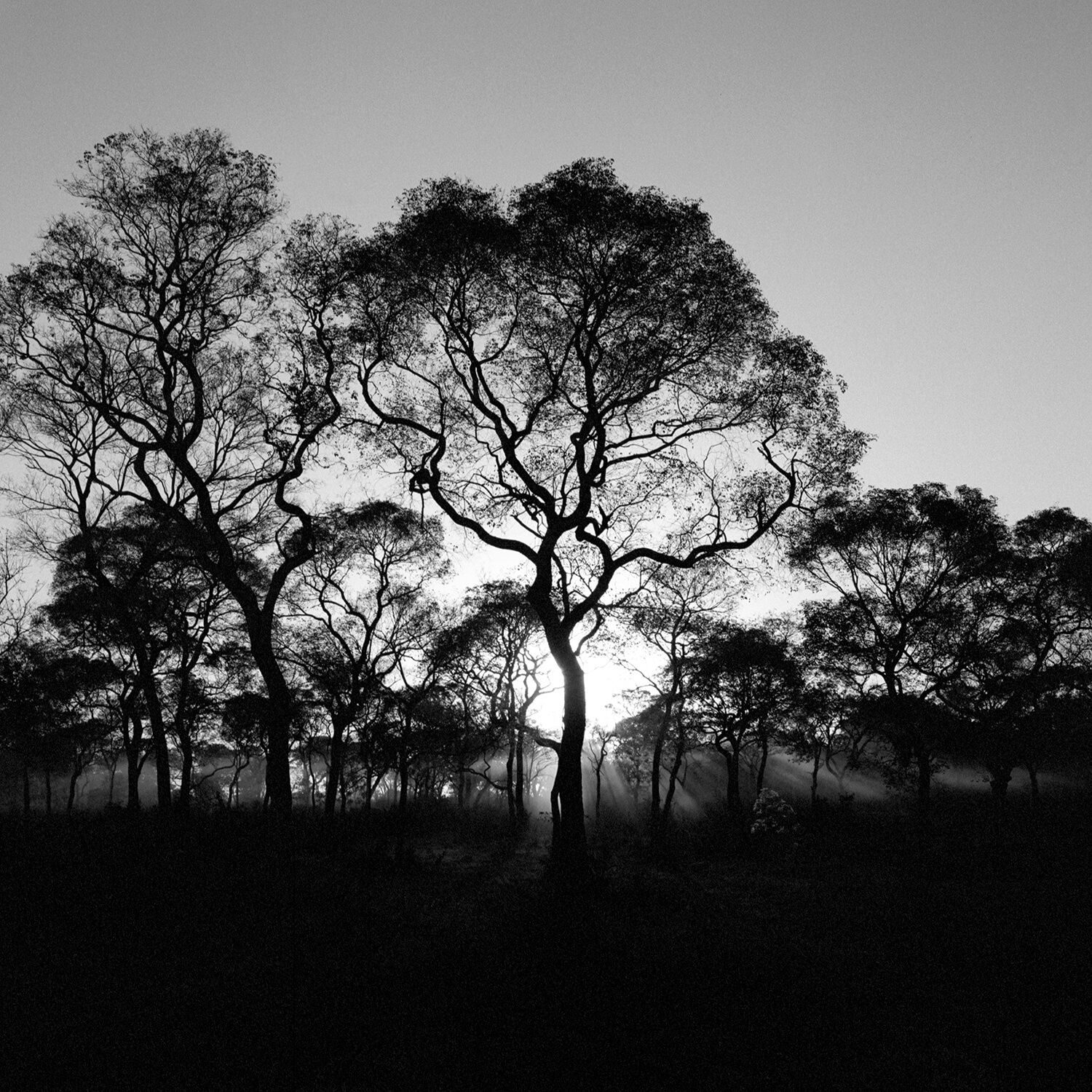
EVELINE SCHNEIDER
“I made this photograph in the Pantanal in Brazil, the world’s largest tropical wetland area and one of the most biodiverse environments on Planet Earth. It was early morning and the sun just began to rise behind this skyline of trees, the rays bathing each single branch in bright light, as if waking up the spirits of every tree. We often take trees for granted, but if we look closely, we can see that each one of them reveals an entire universe of its own; a terrestrial treasure that we need to be aware of, for it makes life unique to our planet.”
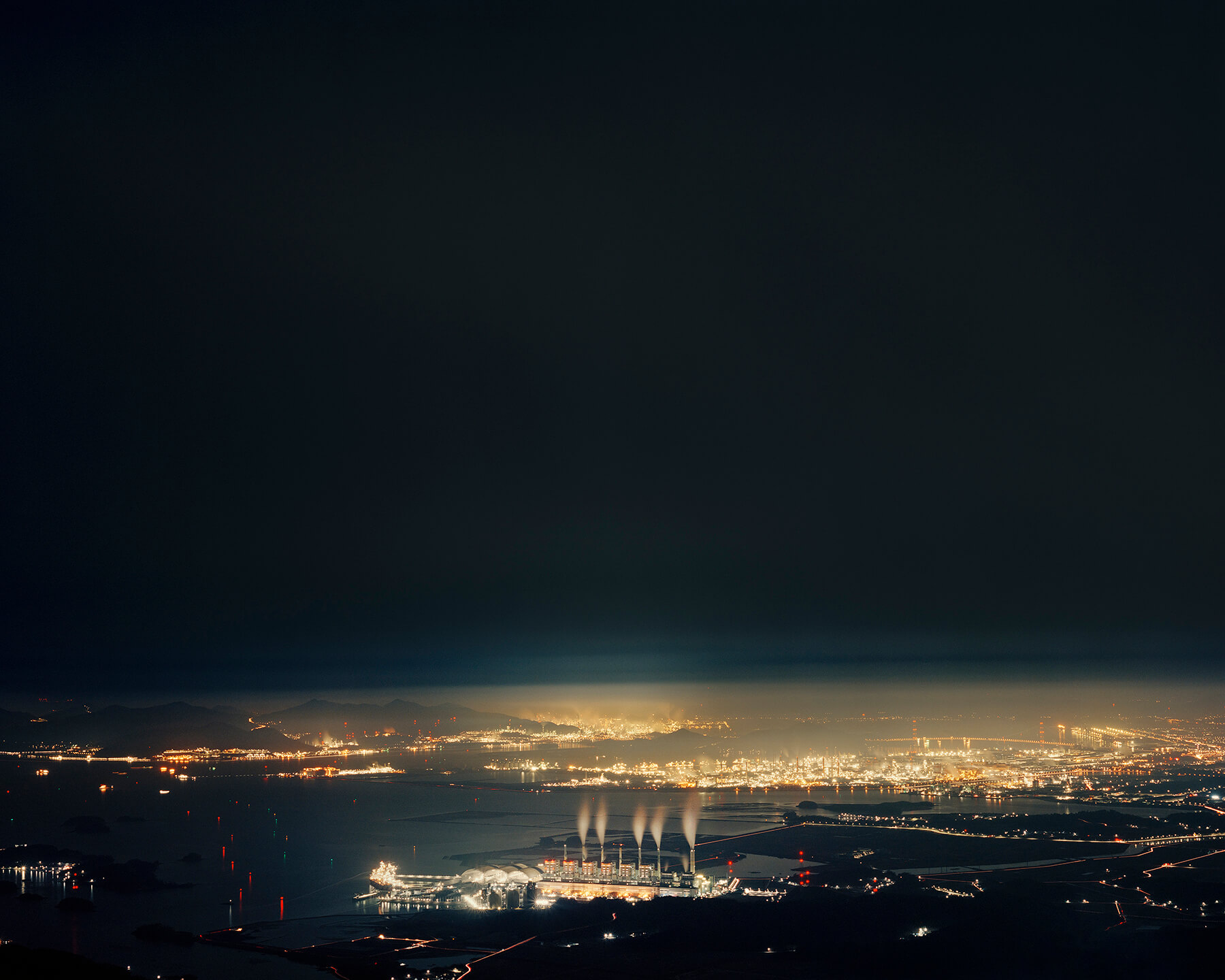
SEUNGGU KIM
“Hadong Observatory (23-2-6, 5:35 AM, Air Quality Index 113) . There is a province called Hadong, which is 350km away from Seoul. We can see the coexistence of national marine parks, national industrial complexes, and a thermal power plant at the top of this coastal mountain. I have set this place as my own atmospheric observatory, and I hope that through this work we will recognize that everything surrounding humans is connected and influenced by each other.”
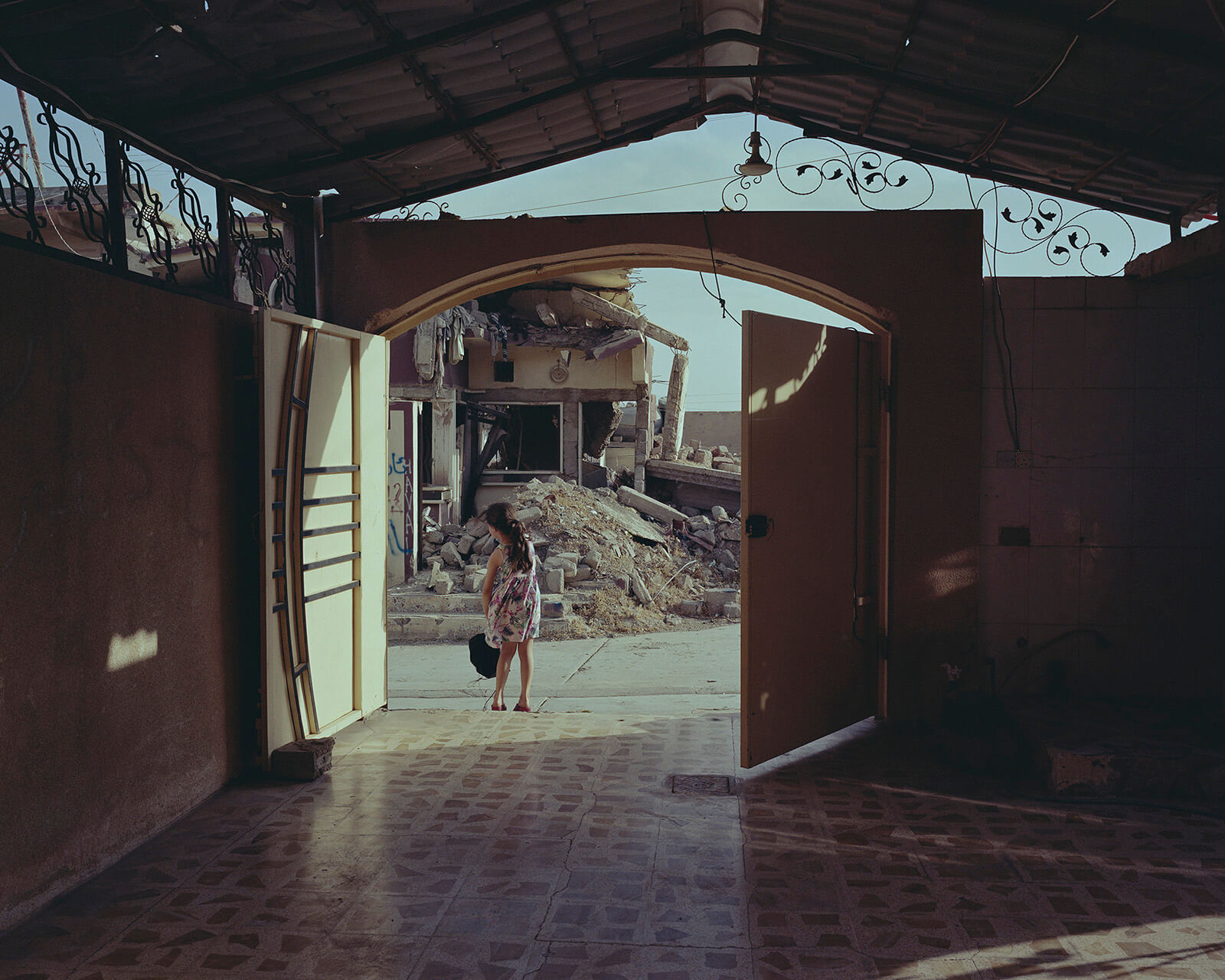
MIRIAM STANKE
“This photograph was taken in North Iraq in 2021. Nudem is standing in the driveway of her family home in Sinjar City. After the brutal attacks of the so-called Islamic State in 2014 in an attempt to wipe out the Yazidi community the city is still partly destroyed and many did not return home. The girl is the youngest child of the family and when they had to leave their village to escape, she was just one year old.
Their village and their home were then destroyed by the terrorist group and never rebuilt. Since their return 8 months before I took the picture, they have lived in the house of their aunt who was killed during the attacks. In the house you can still find traces of ISIS who occupied it and broke the brick walls to move between houses without being seen from the streets. A big grey plastered stain in the living room remained and is a constant reminder of past events.
Every time we entered the house Nudem had a big smile for us. This day the family wanted to show us the path up the mountains they went to escape the genocide in 2014. Nudem wanted to come with us and picked her backpack running outside. There was just a view seconds to take this picture. It reminds me of the strength of the Yazidi community. For me Nudem is a constant reminder that besides all the hatred and destruction in the world, love, affection and community can be stronger than hate. The picture is part of the series “Sinjar, My Soul, to You I Belong”.”
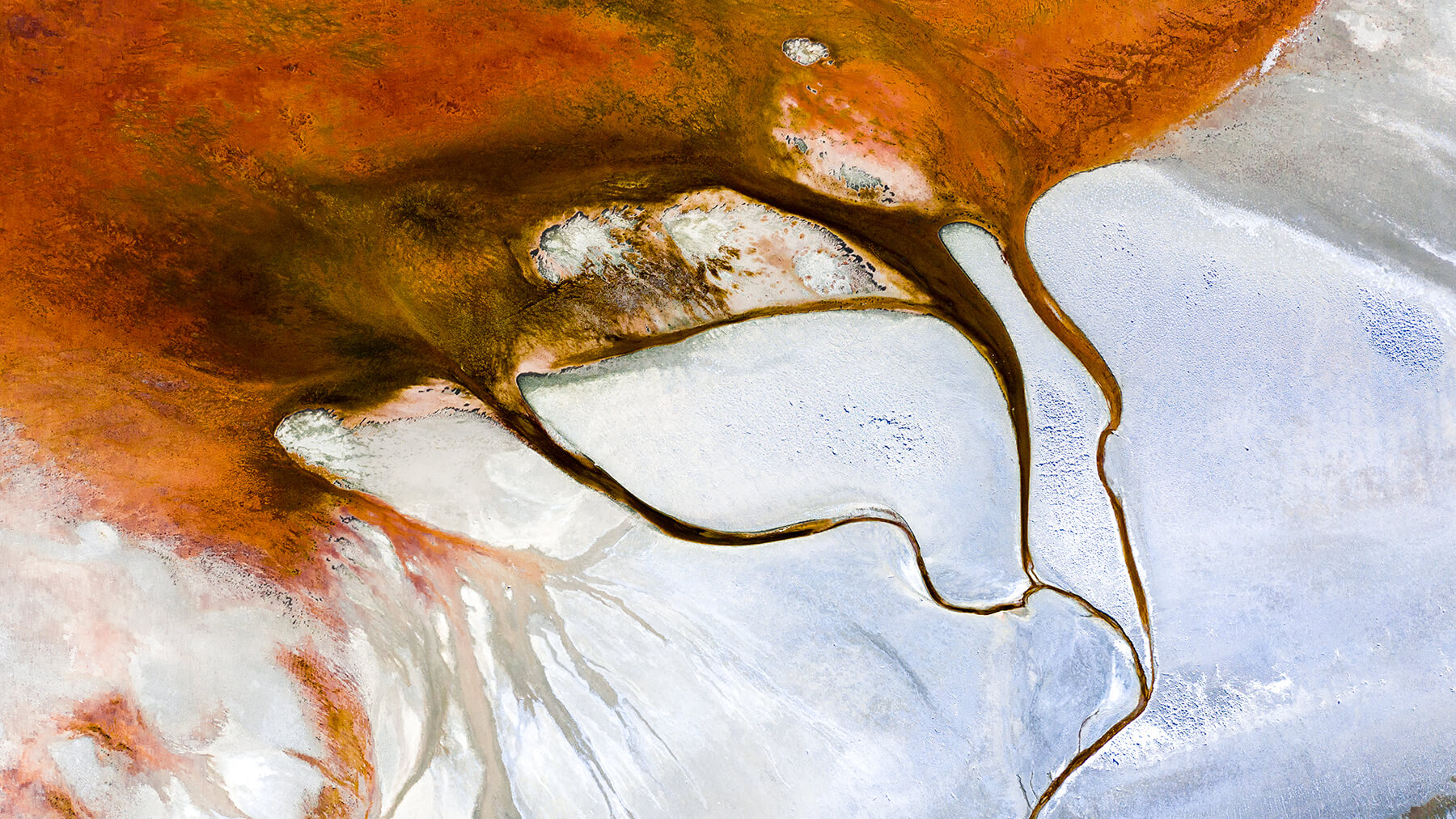
JOSUÉ SILVA
“My current favorite work is titled Watercolor. It’s a photograph of a dry salt lake located in the High Desert where several bodies of water are now part of ancient history. This one in particular has been shallow flooded and as a result, displays a unique palette. What I love about it aside from the color, is nature’s effortless beauty in composition. There was no need for heavy editing and this piece in fact contains very little. At times it’s easy to get caught in the mindset of creating only what will be your best work. This capture reminds me to keep it simple and honest.”
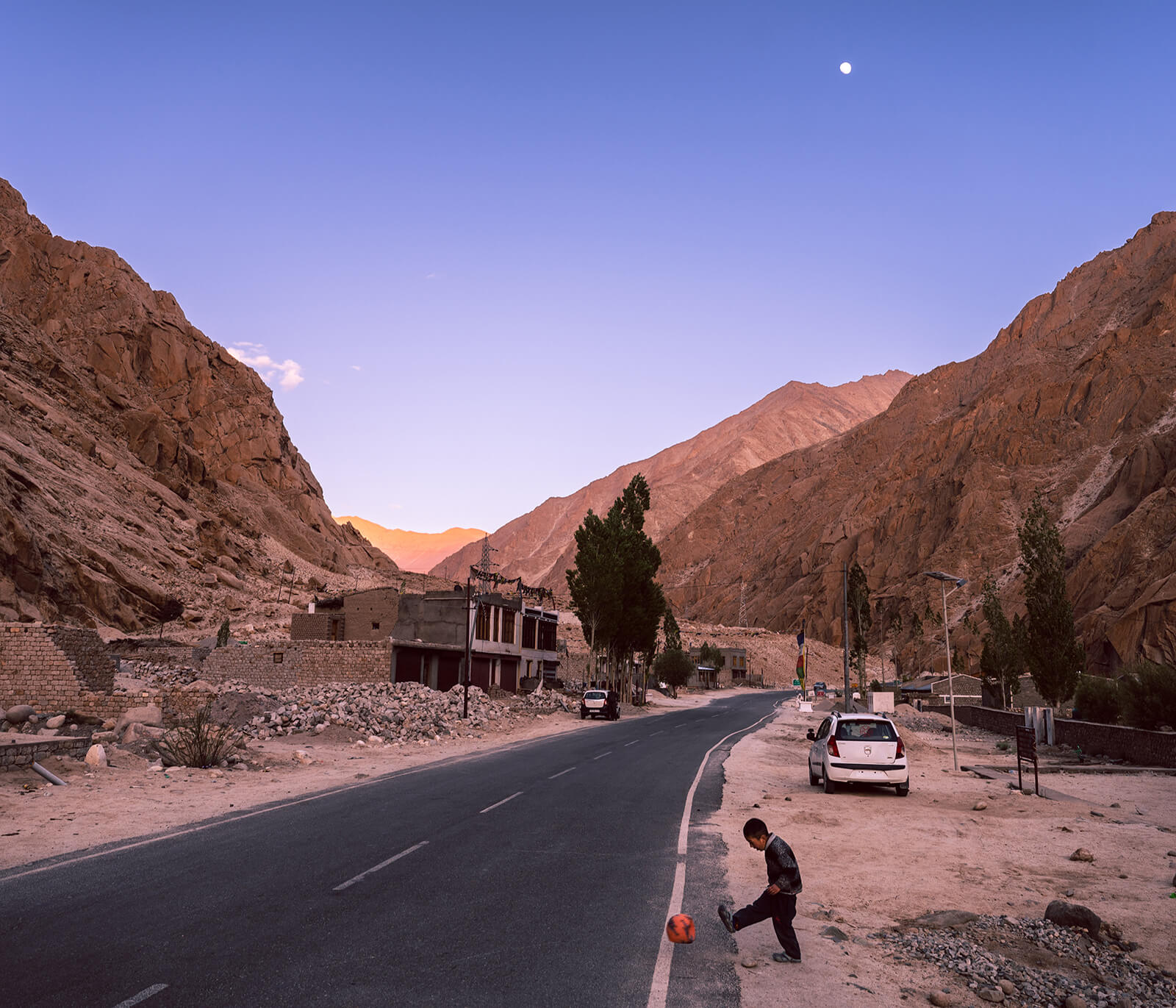
AMAAN ALI
“Amidst the enchanting barren rocks of the offline zone in Hemya, Ladakh, a moment of decisiveness compelled me to capture this image. The surreal surroundings offered an escape from ordinary city life, creating an illusionary world. As the kid playfully stood in the middle of the road, it was an unexpected and serendipitous moment that I had the privilege to freeze in time. Little did I know, this image would ignite profound thoughts about the world at large.
It was the solitary frame I captured in that instant, unintentionally freezing the ball on the line. Yet, it transcended its simple composition, prompting me to contemplate Roland Barthes’ concept of Punctum and ponder Cartier Bresson’s wisdom on being receptive to the photographic moment. Above all, it reaffirmed why I pursue photography, reminding me of the profound impact this art form can have on our understanding of the world.”
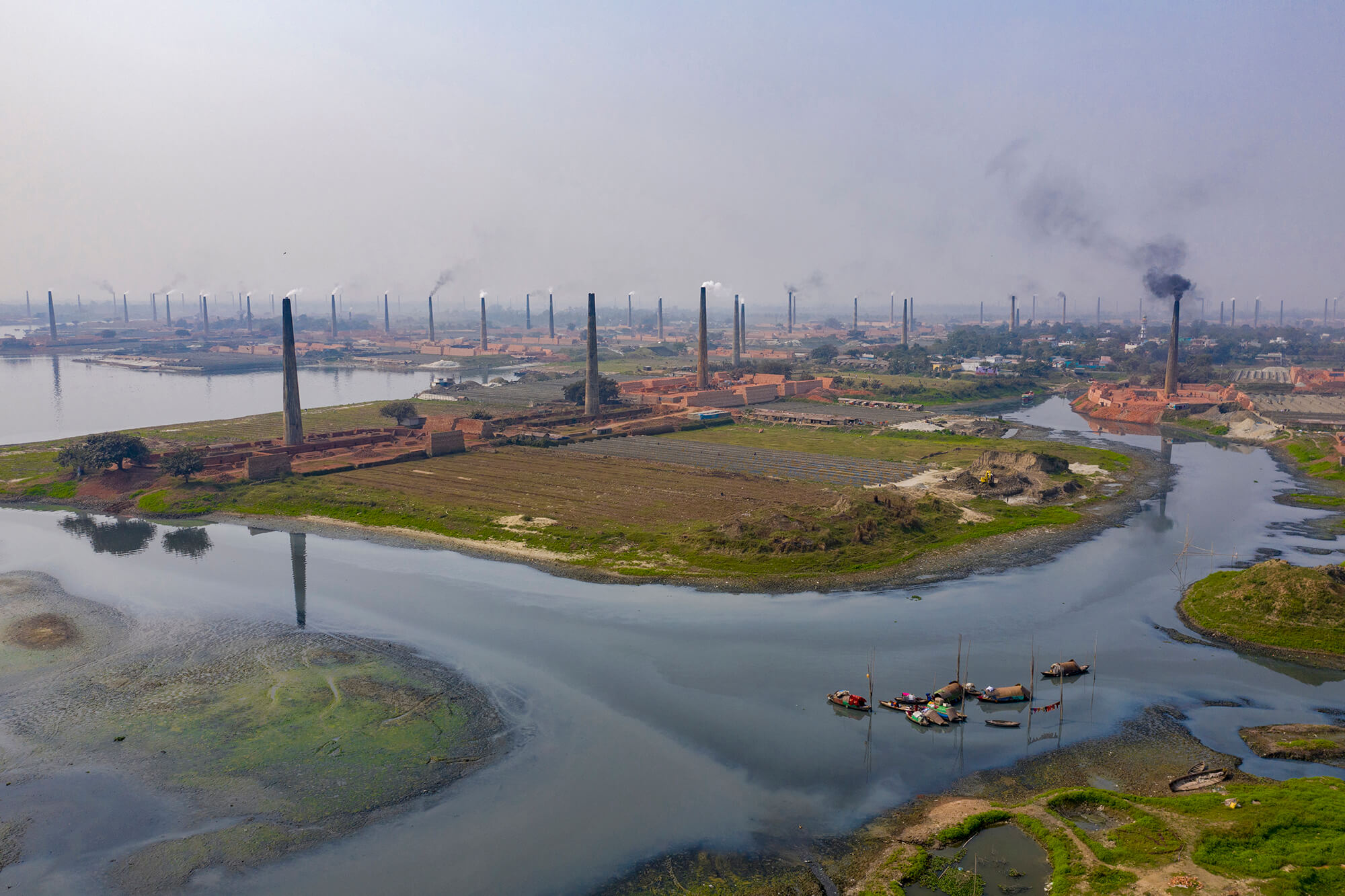
AZIM KHAN RONNIE
“This image is from my long term and ongoing project “Cause of Climate Change” It’s one of my favorite shots because I wanted to show the scale of the massive brick kilns in a single shot, and I think I achieved it here. Brick kilns are one of the main causes of climate change. The breathtaking scale of Bangladesh’s brick-making industry is captured in photo which show them piling up in thousands as manufacturing processes wreak havoc on the surrounding environment. It is estimated that a staggering one million people churn out tens of billions of bricks each year across 7,000 separate kilns. In the capital of Dhaka, pollution from brick factories and dying plants increasingly turns water in the River Turag green with algae. Brick kilns are the top air polluter in the country, particularly during dry season when most bricks are made, turning the air quality of this metropolis severely unhealthy.”
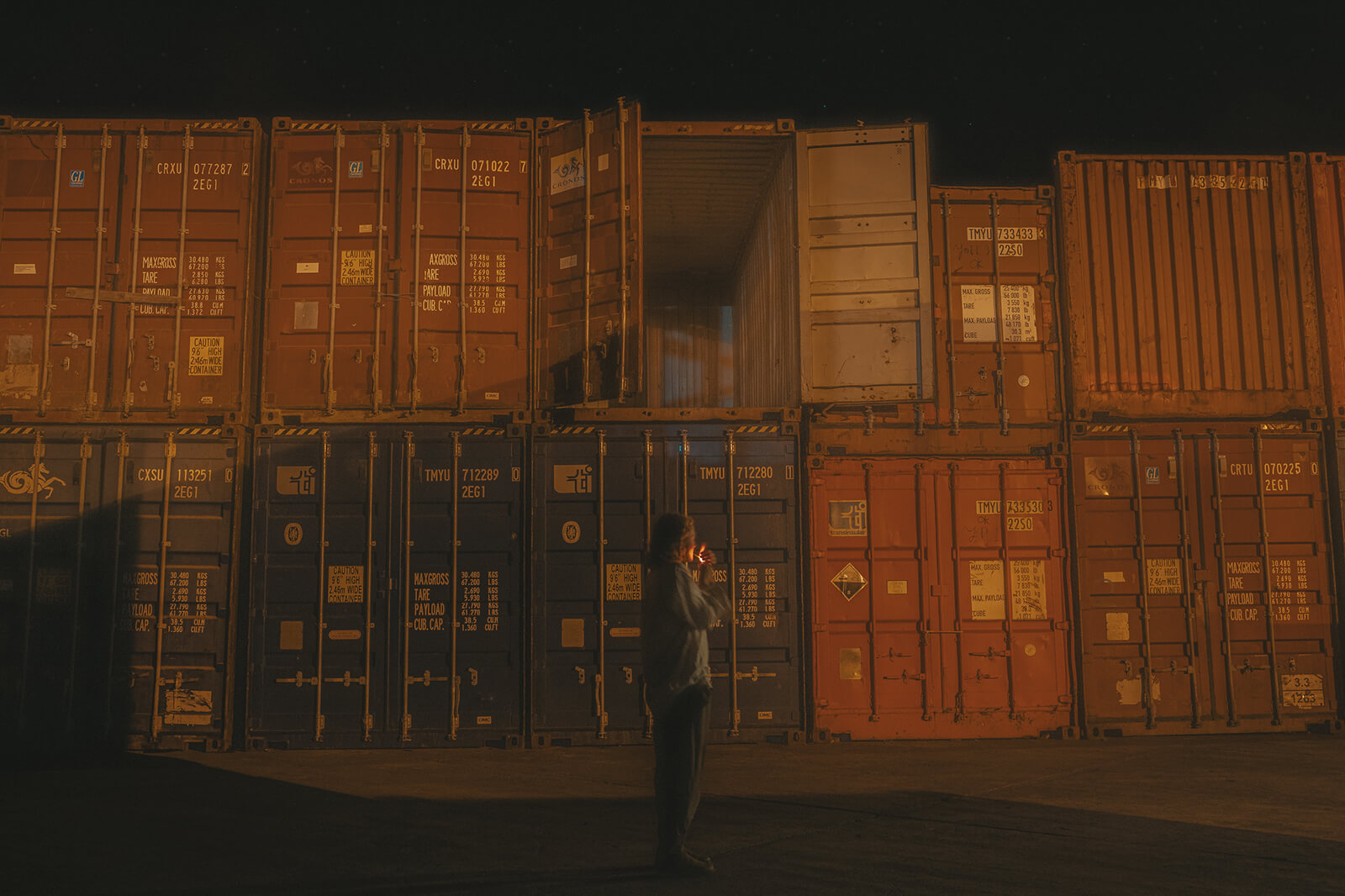
ALIZÉ JIREH
“This photo was taken on a late night in the port of Lajes das Flores, a small island roughly 1000km from mainland Portugal. I had arrived two nights before after a 30 day North Atlantic crossing that I traversed with two other women on a 50 year old wooden catamaran. I remember when we passed container ships on the voyage, their size made miniscule by the expansiveness of the ocean, little specs in this infinite field of blue. I was reminded of how small we are, existing in a space that we are intricately connected to and effecting every day no matter how big or tiny we seem to be in it.
So as I stood on land, after so long with little human contact, no solidity, no structure, in this quiet fishing port housing all these containers, filled and emptied with the things we humans need, I felt humbled by the immensity of it all once again, and how small but important we are as individuals residing on this planet, requiring things from it, moving in it and breathing it all in.”
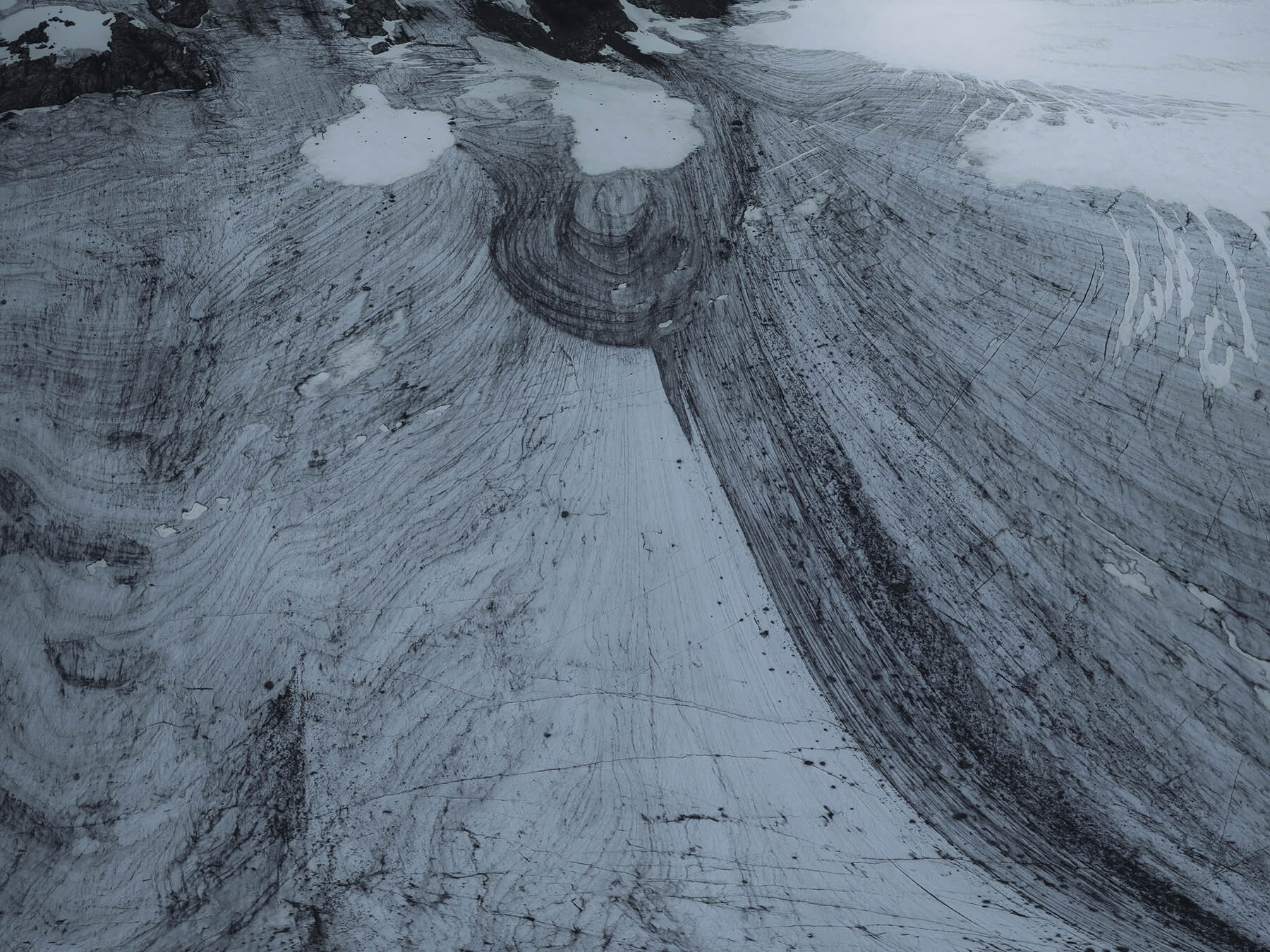
LORENZO POLI
“Brushstrokes of Geodesic Time is an image from my latest project Ancestral Bodies. Ancestral Bodies delves into the glacial realm of the Anthropocene epoch, and it is the result of two years of multidisciplinary research that expands into glaciological science, while engaging with various experiential modes, from the visual to the spiritual. By fathoming matter’s infinite states, it aims to decipher the emergence of the deepest layers of the world’s glacial ice.
This photograph unveils the morphogenetic processes formed by the interplay of geodesic time and celestial particles – as ice cyclically transitions from solid to liquid to sublime. Imbued with the history of the Earth, the Land morphs into a canvas of the divine, with hues nuanced by the cosmic rhythm and the synchronicity of the solar system. It echoes the unwavering serenity of Gandhi’s Satyagraha, and it resonates with my inner power of self-transformation.
Venturing amidst these vanishing wilderness sanctuaries deeply nurtures and renews my kinship with the Natural World. An ecological and symbiotic shift beckons for biocentric equality and harmonious reconciliation with Nature.”
